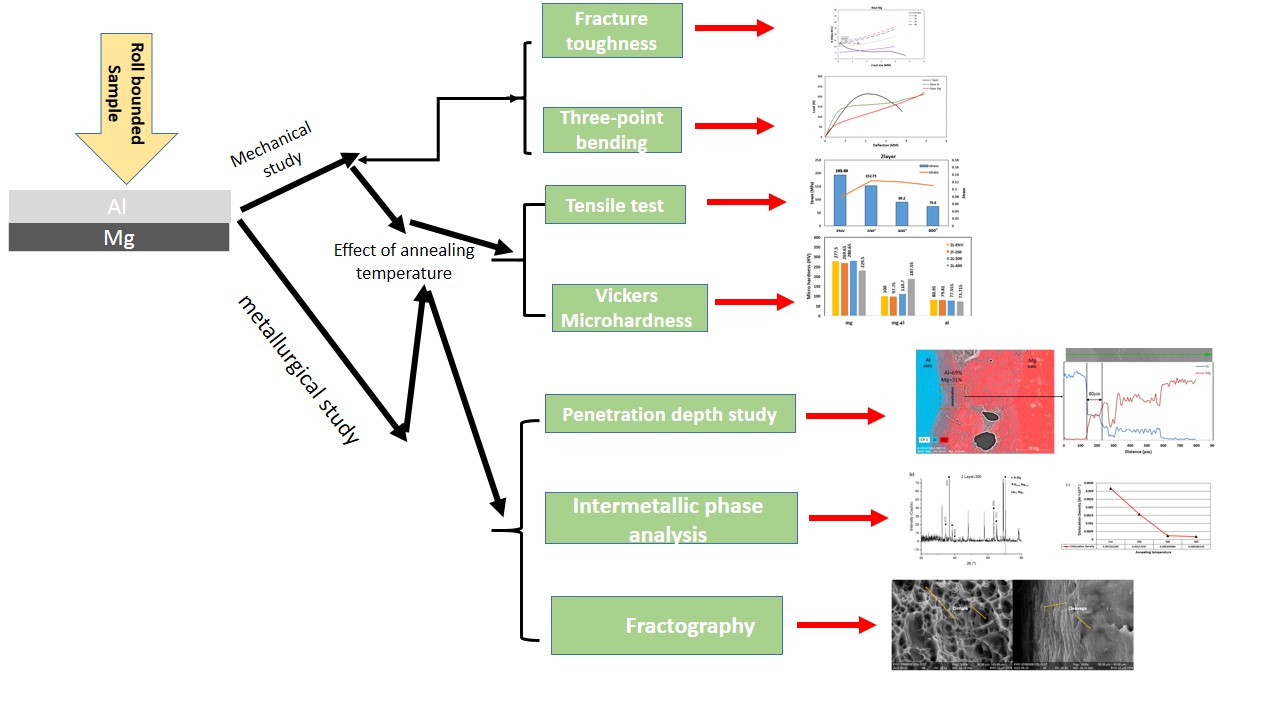Fri, Apr 18, 2025
[Archive]
Volume 22, Issue 1 (March 2025)
IJMSE 2025, 22(1): 11-26 |
Back to browse issues page
Download citation:
BibTeX | RIS | EndNote | Medlars | ProCite | Reference Manager | RefWorks
Send citation to:



BibTeX | RIS | EndNote | Medlars | ProCite | Reference Manager | RefWorks
Send citation to:
Tayebi P, hashemi R. Investigating the Fracture Toughness and Mechanical Properties of the Two-Layer Al 1050/Mg AZ31B Sheets Fabricated by the Roll Bonding, Considering the Annealing Temperature Effect. IJMSE 2025; 22 (1) :11-26
URL: http://ijmse.iust.ac.ir/article-1-3749-en.html
URL: http://ijmse.iust.ac.ir/article-1-3749-en.html
Abstract: (3865 Views)
This study presents the manufacturing of Al 1050/Mg AZ31B bimetallic sheets using the cool roll bonding process, followed by an investigation of the effect of annealing temperature on mechanical properties and microstructural features. Annealing treatment was performed at 200, 300, and 400 degrees Celsius. Mechanical testing includes tension, micro-hardness, three-point bending, and fracture toughness. Scanning electron microscopy equipped with energy-dispersive X-Ray spectroscopy (SEM-EDX) and X-ray diffraction (XRD) were used to investigate the microstructure in the infiltration zone. Mechanical testing shows that increasing the annealing temperature decreases the tensile strength of the two-layer specimens. Micro-hardness, XRD, and SEM-EDX investigations confirm the presence of intermetallic particles in the penetration zone. The Micro- hardness test showed that with the increase of the annealing temperature, the hardness in the penetration zone of Al 1050/Mg AZ31B increases. This increase in micro-hardness result confirms the presence of harder intermetallic phases with increasing annealing temperature in the penetration zone.
Keywords: Fracture toughness, Mechanical properties, Al 1050/Mg AZ31B sheets, Roll bonding process, Annealing
Type of Study: Research Paper |
Subject:
Synthesis and preparation of materials to meet the requirements of AM techniques
Send email to the article author
| Rights and permissions | |
 |
This work is licensed under a Creative Commons Attribution-NonCommercial 4.0 International License. |








